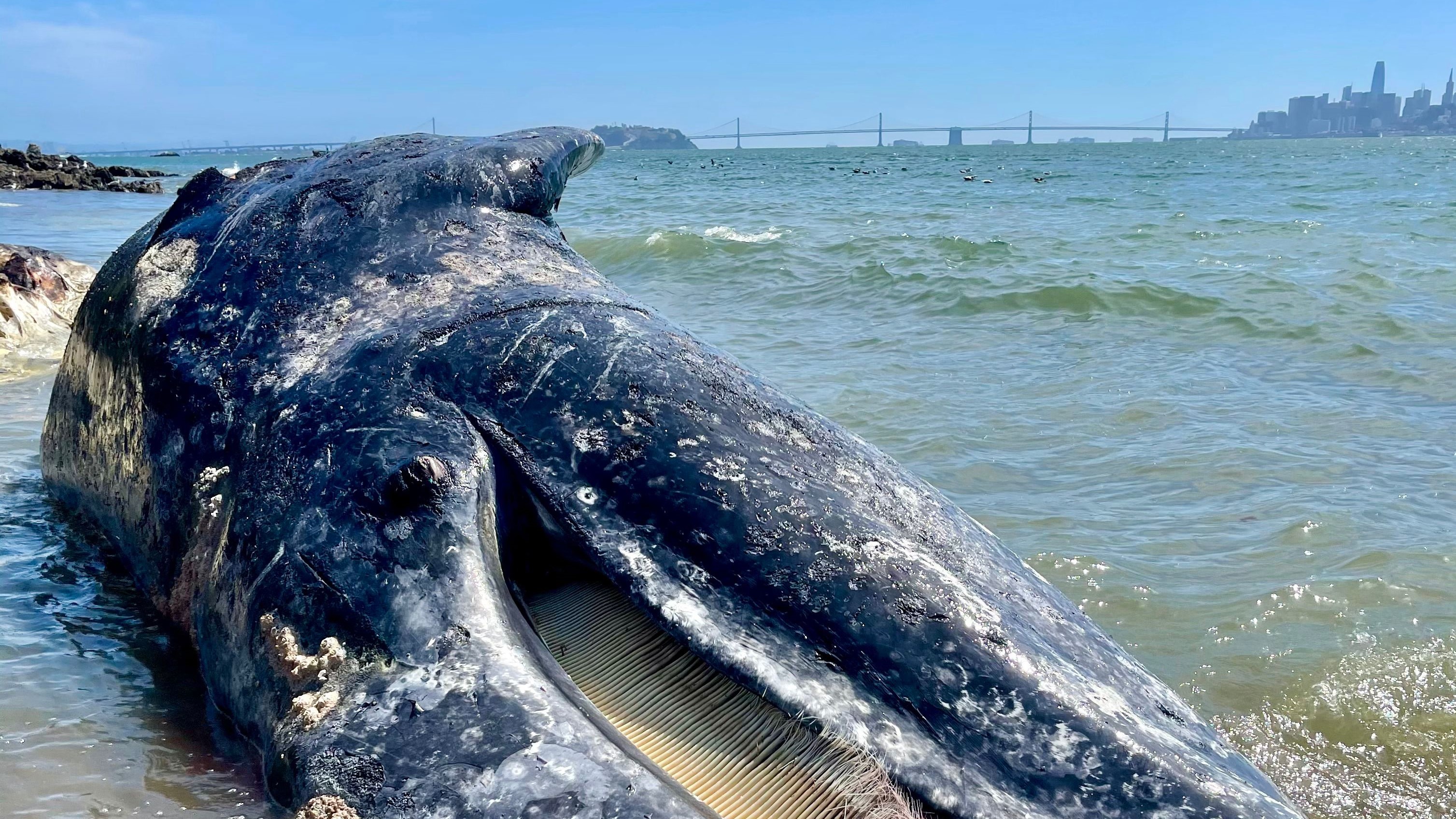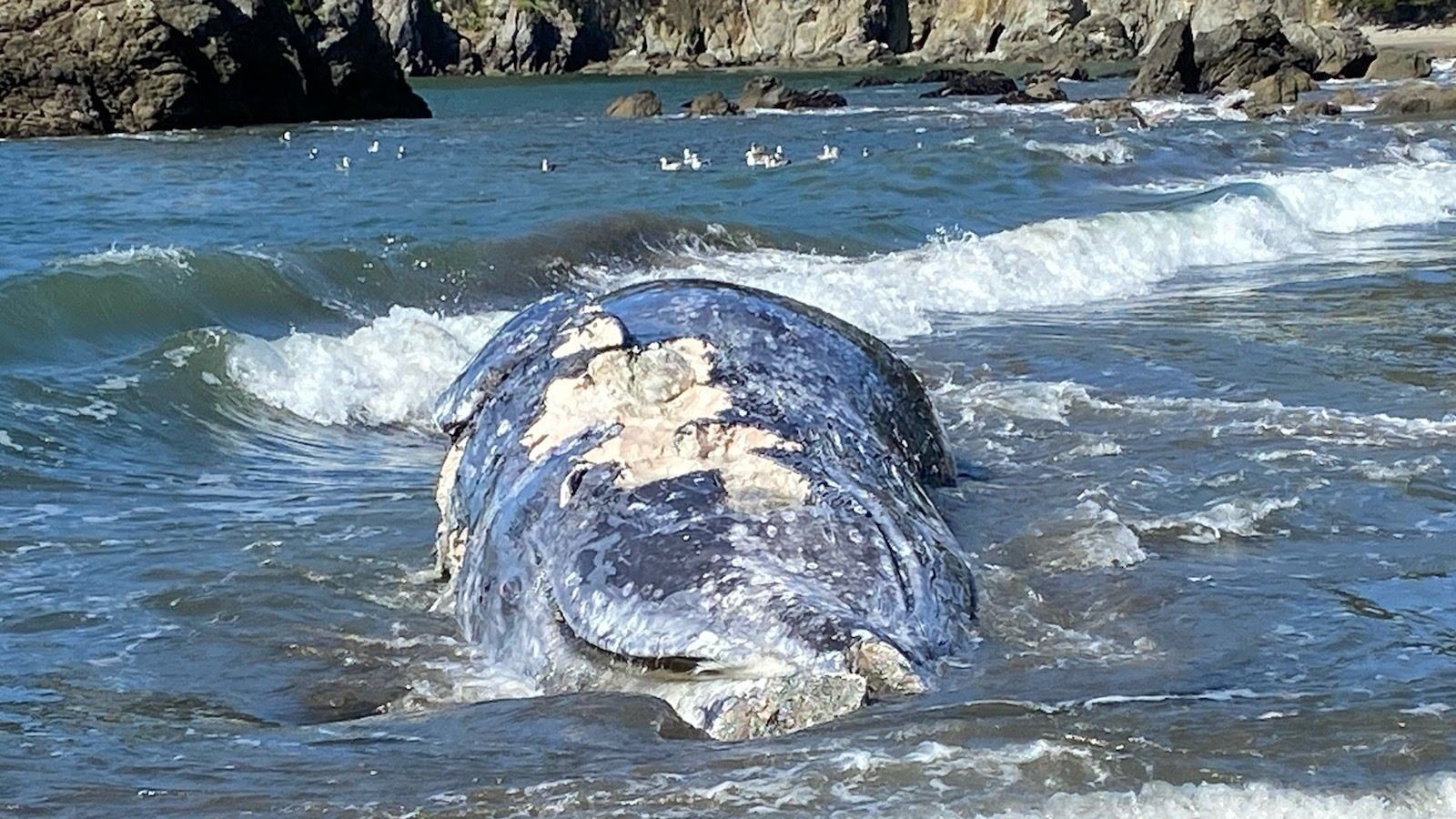Experts worried after 4 dead gray whales wash up around San Francisco
The whales probably represent just a small fraction of the number dying in the area.

Four dead gray whales have washed up on the shores of the San Francisco Bay Area in just eight days, prompting fears that the species is under threat from human activity in the area.
The first gray whale to wash up was an adult female that was discovered at San Francisco's Crissy Field on March 31. Another female washed ashore at Moss Beach in San Mateo County on April 3, and a 37-foot (11.3 meters) subadult male was discovered floating in Berkeley Marina on April 6 and had to be towed away by boat. The final body belonged to a 41-foot (12.5 m) adult female that washed ashore on April 7 at Muir Beach.
The Marine Mammal Center (MMC) performed necropsies on all four whales but could only determine a definitive cause of death for the most recent female at Muir Beach. That whale had suffered injuries consistent with a ship strike.
Related: 13 bizarre things that washed up on beaches
The sheer number of gray whales washing up has scientists worried.
“It’s alarming to respond to four dead gray whales in just over a week because it really puts into perspective the current challenges faced by this species,” Pádraig Duignan, director of pathology at MMC, said in a statement. "These necropsies are critical to provide insights into gray whale population health and that of their ocean home, including how human activity impacts them."
Gray whales are not listed as an endangered species, but their population is in decline and they have undergone similar mass die-offs in the last few decades. In 2019, 73 dead gray whales were found washed up along the west coast of North America during a six-month period, Live Science previously reported.
Get the world’s most fascinating discoveries delivered straight to your inbox.

Under threat
Gray whales pass by the California coast twice a year — first in December and January and later during March and April — as they complete their 10,000-mile (16,100 kilometers) migration from summer feeding grounds in the Arctic to warmer winter breeding grounds near the coast of Baja California in Mexico and back again.
However, since 2016, as many as one in five gray whales making the migration has died, according to the National Oceanic and Atmospheric Administration.
Necropsies from previous years have revealed that the main causes of death for gray whales are malnutrition, entanglement in fishing gear and trauma from ship strikes, according to the MMC.
Malnutrition is mainly a result of climate change, which has affected water temperatures in the Arctic and caused the whales’ prey to move away from their normal feeding grounds, although overfishing of their prey is also likely to play a role in food availability, according to the MMC.
However, entanglement and ship strikes are likely the biggest problem for whales within the San Francisco Bay Area.
The female recently recovered from Muir Beach had significant bruising and hemorrhaging to muscle around its jaw and neck vertebrae, consistent with a ship strike, and the subadult male found in Berkeley Marina is also suspected to have died from similar injuries, although it could not be conclusively confirmed. Both whales were in good physical condition apart from their injuries and showed no signs of malnutrition, according to the MMC.
"Ship strikes and fishing gear entanglements kill many whales that we never see," Kristen Monsell, legal director of the Center for Biological Diversity's Oceans program, told The Associated Press (AP). Only one in 10 gray whale bodies are likely to make their way to the shore, meaning many more have likely died and sunk to the ocean floor, according to the AP.
The Center for Biological Diversity is now suing the federal government to get speed limits in shipping lanes off California, and encouraging state lawmakers to ban any fishing gear involving ropes that can entangle the whales, according to the AP.
"Gray whales are ocean sentinels due to their adaptability and foraging habits, meaning they have a lot to tell us about the health of the ocean," Duignan said in the MMC statement. "So to see the species continue to suffer with the added threats of human interaction is a major cause for concern."
Originally published on Live Science.

Harry is a U.K.-based senior staff writer at Live Science. He studied marine biology at the University of Exeter before training to become a journalist. He covers a wide range of topics including space exploration, planetary science, space weather, climate change, animal behavior and paleontology. His recent work on the solar maximum won "best space submission" at the 2024 Aerospace Media Awards and was shortlisted in the "top scoop" category at the NCTJ Awards for Excellence in 2023. He also writes Live Science's weekly Earth from space series.


